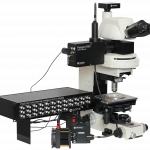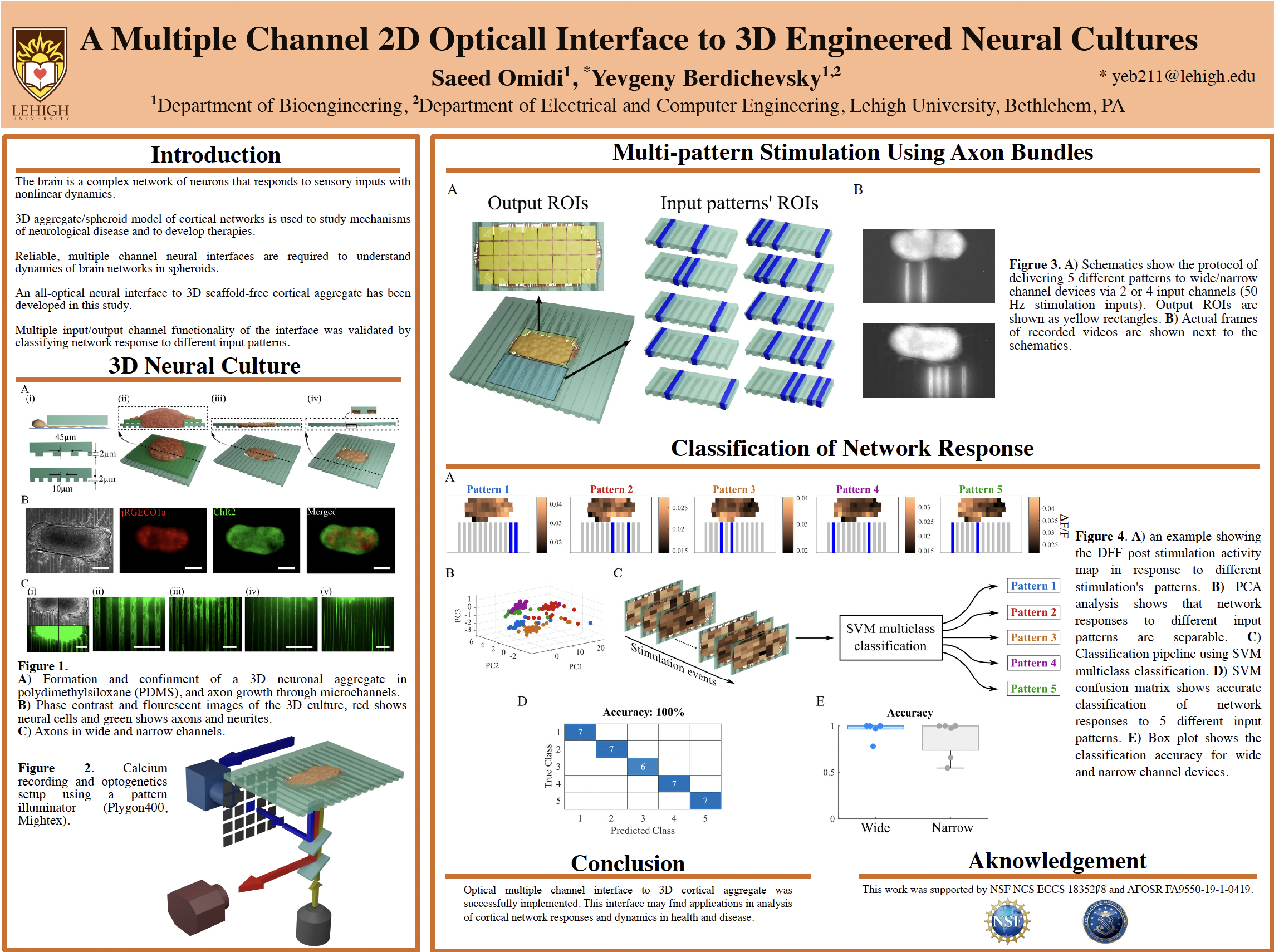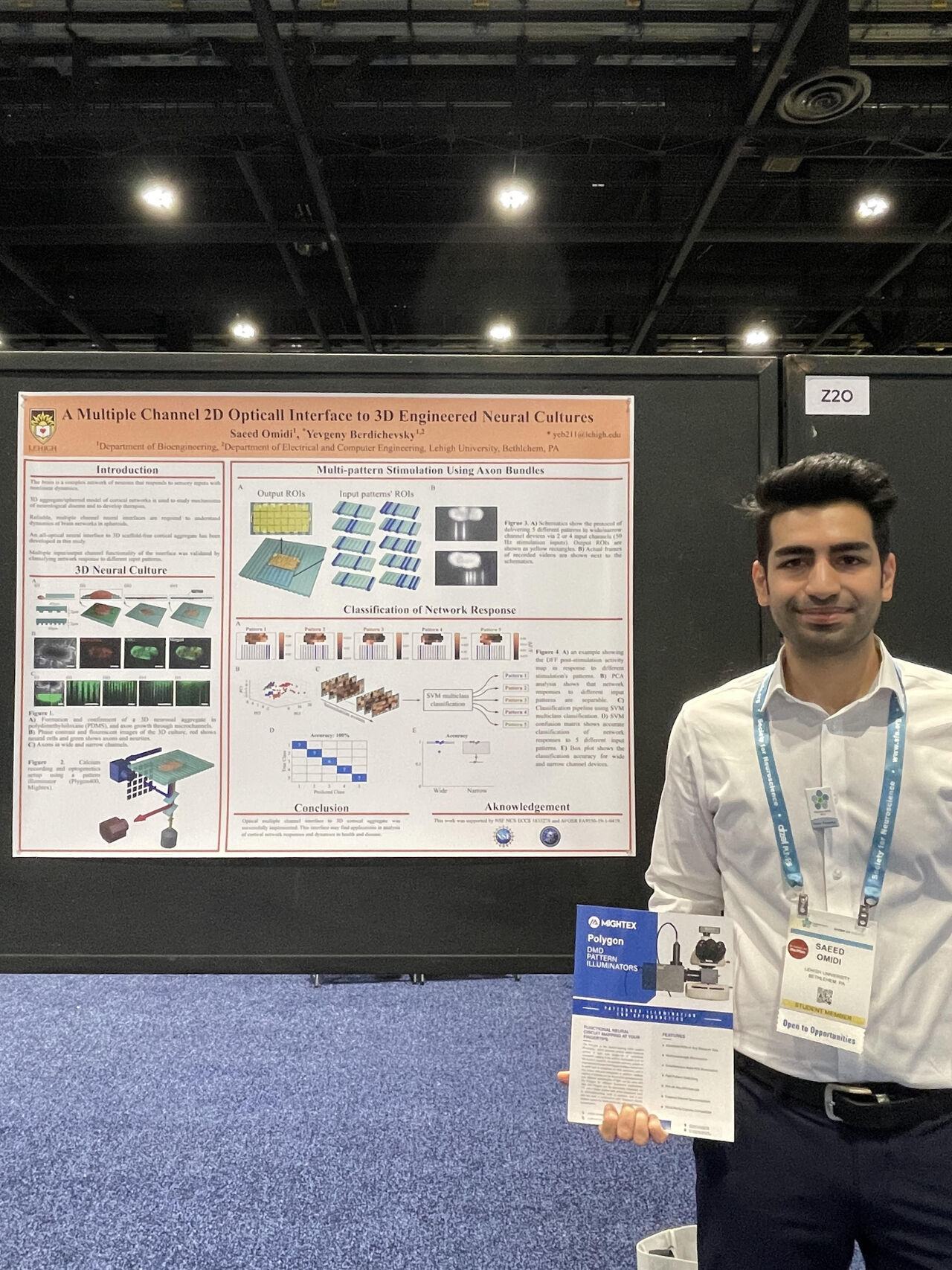Published on 2024/11/05 Research powered by Mightex’s Polygon1000 

This research was recently presented by Saeed Omidi at the Society for Neuroscience (SFN 2024) in Chicago, USA and was supported by a Mightex Travel Award to promote scientific communication and sharing of research using the Mightex Polygon. Congratulations to Saeed Omidi! We can’t wait to see more from this exciting project!


Research into neural circuits and their dynamics is vital for decoding the functional and dysfunctional aspects of the brain, especially in relation to neurological disorders such as autism, epilepsy, and schizophrenia. The brain’s complex network of neurons processes information via employing both feedforward sensory pathways and recurrent synaptic connections. Traditional 2D in-vitro models, while useful, fail to replicate the three dimensional structure and connectivity of neuronal networks observed in in-vivo models. Newer 3D in-vitro models generally lack sensory input connectivity. In this work, we developed a novel 3D matrix-free brain-on-a-dish model, enhanced with a compartmentalized 2D optical interface mimicking multi-channel sensory inputs. The ‘sensory’ interface utilizes microchannel confinement of bundles of axons, enabling independent manipulation. Primary rat cortical neurons expressing Channelrhodopsin2 (ChR2) and jRGECO1a were used to form 3D aggregates and axonal bundles. Axonal bundles were independently stimulated by a patterned optical illuminator (Polygon400, Mightex). This design allows for precise multi-channel control and manipulation of sensory-like inputs. The 3D portion of the model maintained a dense cortical-like structure and supported strong recurrent synaptic connectivity. We delivered different stimulation input patterns and measured the response of the 3D network by imaging changes in jRGECO1a fluorescence. We found that network responses to different input patterns were separable and classifiable, similar to responses evoked by sensory stimulation in the primary sensory cortex. This illustrates the model’s capability to combine sensory-like functional inputs with a 3D structure in vitro. This model may have potential use in exploring the mechanisms underlying disorders of the cortex.

Author: Saeed Omidi
Bio: Fourth-year Bioengineering Ph.D. student with a strong interdisciplinary background in bioscience (specialty in neuroscience) and engineering (Lehigh University, Bethlehem, PA), USA.




